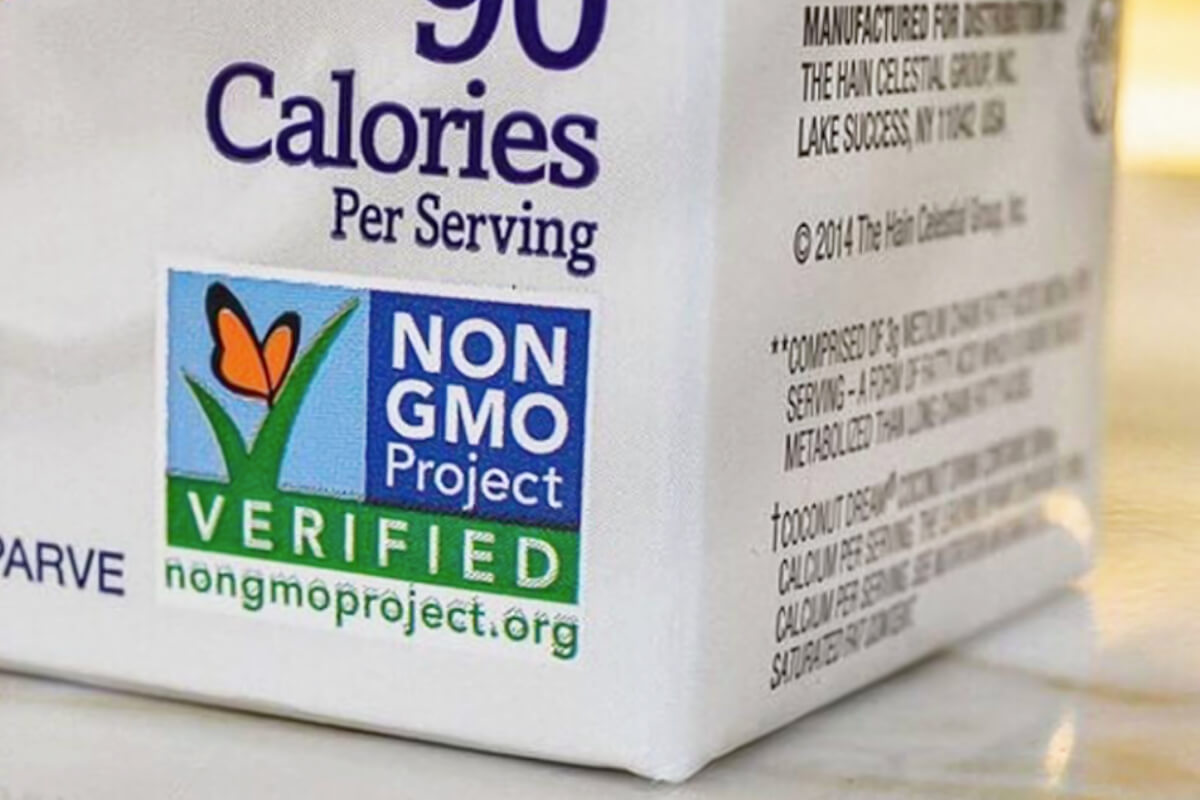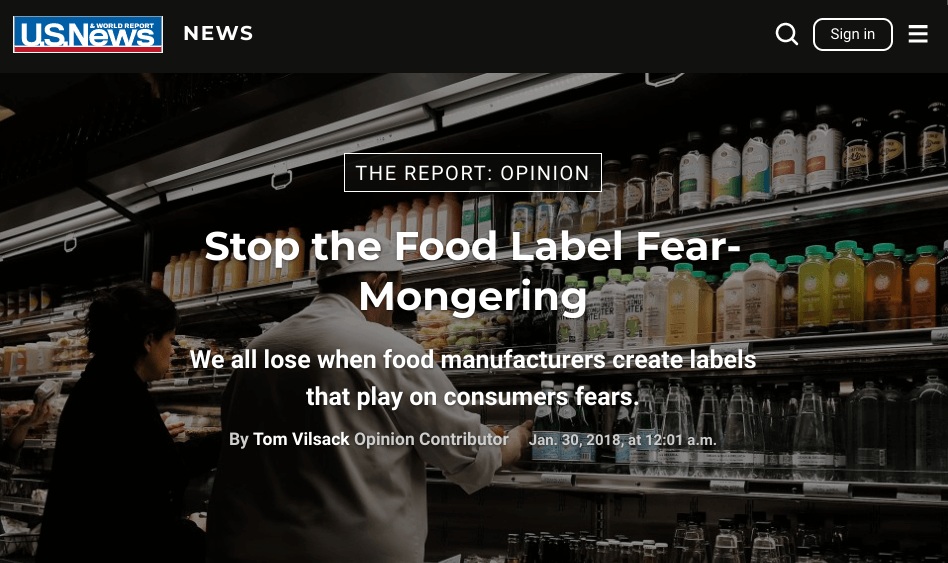Vilsack was concerned about so-called “absence claims” on food labels, which inform a consumer about what isn’t in a product, rather than what is. He offered several examples, including Hunt’s “non-GMO” label on its canned crushed tomatoes, in spite of the fact that there was (and still is) no such thing as a GMO tomato on the market. (“GMO,” or “genetically modified organism,” is a process-based, unscientific, often polarizing term applied to certain precisely modified organisms, usually food plants).
Another of Vilsack’s examples was the “no added hormones” label widely applied by the poultry industry, despite the fact that federal law already makes it illegal to sell poultry in the U.S. raised with added hormones.
The extraordinary reach of absence claims is illustrated by the “Non-GMO Project” butterfly label. The project claims the label has emblazoned more than 60,000 products from over 3,000 brands of organic and nonorganic products on supermarket shelves — many of which have no GMO counterpart or couldn’t possibly contain GMOs. The mission of the Non-GMO Project includes “preserving and building the non-GMO supply chain” and “encouraging a non-GMO seed supply,” in spite of GMO-derived foods’ superiority over those made with less precise, less predictable technologies for genetic modification. The Non-GMO Project hopes to gain market advantage over GMO foods by indirectly raising unwarranted concerns about them.

The US Food, Drug, and Cosmetic Act prohibits the “misbranding” of food, which includes, among other things, labeling that is “false or misleading.” As part of this law, the Food and Drug Administration enforces food labeling rules that include restrictions on absence claims. It issued specific “non-binding” guidance in 2015 (revised in 2019) for the labeling of foods to indicate that they are not derived from genetically engineered plants.
The FDA guidance permits the GMO absence claim on food “for marketing or providing information of specific interest to consumers.” Such label information answers a single question: whether “the food was or was not produced using genetic engineering.”
It is critical to note, however, that the FDA guidance was issued before the 2016 passage of the National Bioengineered Food Disclosure Law, which requires “bioengineered,” or genetically engineered, food to be specifically labeled. USDA has issued implementing regulations, and enforcement will begin on January 1, 2022. Similar to the absence claim, the label is informational but does not reflect a health or safety claim. The USDA notice of rulemaking stated that the label is for marketing purposes, that does not imply any benefits to human health or the environment, and that the scientific consensus is that foods derived from genetically engineered crops do not pose an inherent health risk. Rather, Congress passed the new labeling requirement to set a single national labeling standard that eliminates the greater costs of a confusing array of conflicting state-by-state rules, and not to add another one.
Consumers will, thus, have specific information on the label informing them of the presence of a genetically engineered food component, which obviates the need for FDA to permit a possibly misleading label indicating its absence.
Indeed, it seems absurd to have one federal agency requiring a label of what is in a product, while a different federal agency would be authorizing a label of what is not, simply because the two separate agencies have overlapping authorities. There is a remedy: In other situations of overlapping jurisdiction, FDA has signed memoranda of understanding to identify which agency has primary responsibility.
However, a footnote in the 2019 revision to the FDA guidance document affirmed that the agency “retains jurisdiction over labeling statements to indicate the absence of GE [genetic engineering] content in human food,” which seems to imply that the FDA would continue to allow the absence claim, even though a presence claim label is now required by USDA. FDA’s continued allowance of absence claims for genetically engineered food will only serve to further promote unwarranted consumer fears and suggests the FDA’s motive may be primarily a desire to preserve regulatory turf.
Secretary Vilsack has a unique opportunity to work toward the resolution of this problem, even though he does not have direct authority over the FDA (which is part of the Department of Health and Human Services). He can seek to have FDA back down via a Memorandum of Understanding. Alternatively, he can pursue resolution by the White House or the Congress, in order that the marketplace can determine the level of consumer interest in purchasing genetically engineered foods, by relying on the new USDA label requirement for them.
However he accomplishes it, we urge Secretary Vilsack to act quickly to stop the FDA from allowing the food label fear mongering he condemned in print two years ago.
John J. Cohrssen is an attorney who served in senior positions in Congress and for White House agencies, including as counsel to the working groups that established the policies for the regulation of biotechnology.
Henry I. Miller, a physician and molecular biologist, is a senior fellow at the Pacific Research Institute. He was the founding director of the FDA’s Office of Biotechnology. Find Henry on Twitter @henryimiller
































